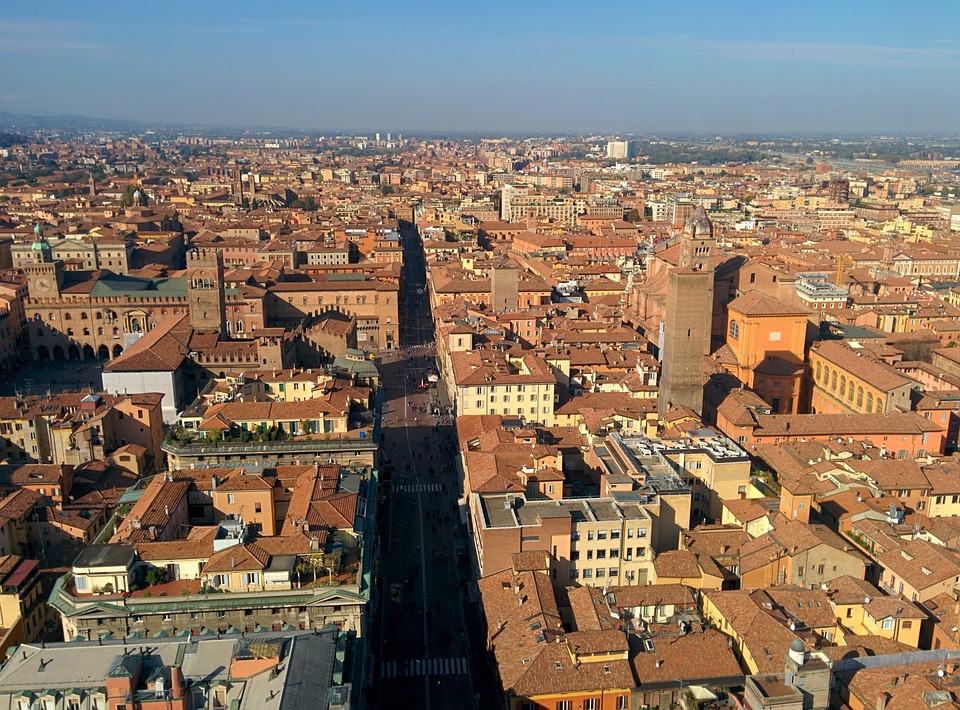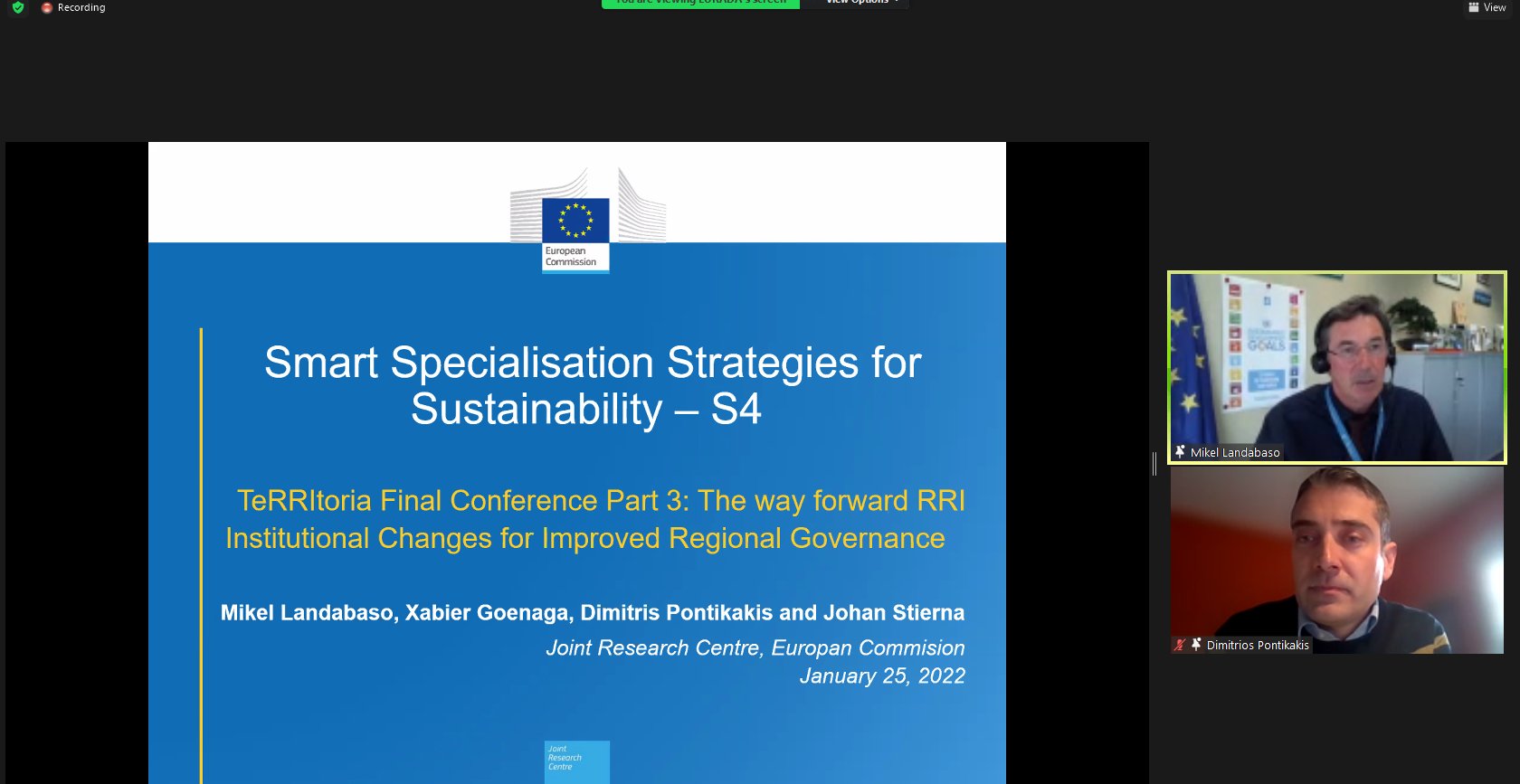Emilia Romagna Region: the current state of the art
For its transformative experiment as part of TeRRItoria, the region of Emilia Romagna (Italy) expects to develop a methodology on how to include Responsible Research and Innovation (RRI) keys in the formulation of its Regional Strategy for Research and Innovation (RIS3). This will be achieved by using Science Education and Public Engagement.
With science education, the region will combine research and training policies to understand how certain professional profiles can be attracted to enhance the training of actors in the process of defining and monitoring RIS3.
Attractiveness Research Territory, the Emilia-Romagna Joint Stock Consortium (ART-ER) aims to foster the region’s sustainable growth by developing the innovation, knowledge, attractiveness, and internationalisation of the region. Its vision is to make the Emilia-Romagna Region innovative and competitive, inclusive and sustainable, creative and open to the world, by promoting innovation for the development of the territory and its businesses, enhancing its excellent research resources, the qualified employment of its talents, and the well-being of its residents.
The mission is to build its Regional Innovation System by initiating shared actions for integrated innovation of Industry, Human Capital, Society, and Territory; intervening on Growth and Competitiveness, Talent and Entrepreneurship, Cohesion, and Participation.
More about Emilia-Romagna
Emilia-Romagna is located in the North-East of Italy, within the most productive area of the country. Its geographical area of 22,453 km2 makes up 7.5% of the national total. With an efficient infrastructure network and strategic geographical position, Emilia-Romagna is an important commercial hub well linked to all Italian cities and the main cities of Europe.
Organisational role in the R&I system
ART-ER’s mission is focused on 4 domains, each involving different activities in the regional context of R&I:
Territorial development:
- Technical support for the development of research infrastructures;
- Ensuring quality of infrastructure for communication, mobility, and production of goods and services;
- Monitoring of the construction and public works sectors;
- Collaboration with local institutions for the sustainable development of cities and territories;
- Monitoring and evaluation of the results of regional policies.
Attractiveness:
- Marketing of the region;
- Promotion of investments in Emilia-Romagna;
- Attraction of talent;
- Technical assistance activities for the Regional Operational Program.
Innovation and knowledge:
- Coordination of the Innovation Ecosystem;
- Open Innovation actions;
- Enhancement of human capital and support for the exploitation of research results;
- Support in business-boosting for start-ups and companies.
Internationalisation:
- Maintaining strong international relationships;
- Support for the regional government in policy planning on International Relations;
- Support for the internationalisation of the Research System;
- Implementation of programs of European Territorial Cooperation;
- Informing about and disseminating activities on European programmes and support for building partnerships and projects.
Economy and labour
According to Eurostat statistics, regional GDP there was €154 billion in 2016, while the GDP per capita PPS is equal to €35,300, one of the highest in Italy (after Lombardy in the region of Milan, Italy’s financial centre and some small autonomous and highly subsidised Alpine regions and provinces).
Sectoral structure
The regional productive system is diversified but has a strong manufacturing core, both compared to the Italian and European averages, and a significant tourist sector in the coastal area. Within the manufacturing industry, the most important sectors of specialisation are: machinery, equipment, and other fabricated metal products; manufacture of clothing, leather, and related products; and manufacture of other non-metallic mineral products, such as ceramics and tiles.
The main strength of this industry can be identified in its considerable inclination to learn, innovate, and co-operate. Nowadays, traditional light industry sectors generally account for less than 30% of employment in manufacturing, whereas the mechanical engineering and motor industries contribute to over 50% of regional employment and exports in Emilia-Romagna16. The most important industries in which Emilia-Romagna has a long-lasting tradition are: agriculture & food, motor industry, industrial mechanics, building & construction, fashion (clothing, shoes, and leather), and furniture. At the same time, there are a number of emerging sectors such as the health industry, biotechnologies, genomics, ICT, and nanotechnology.
Enterprise characteristics
There are 385,000 enterprises located in the region. Manufacturing plays the leading role for the whole regional economy. The most relevant group of industries are connected to mechanical engineering and the automotive sector. Sectors that need to be reinforced are ICT and creative industries, which are still not developed or competitive enough. The service sectors in general is characterized by low productivity.
Innovation system
According to the last edition (2019) of the Regional Competitiveness Index1, Emilia-Romagna ranks 162th out of 268; below the EU average. With regard to the Regional Innovation Scoreboard2, Emilia-Romagna forms part of the “moderate innovators” group.
Research & innovation infrastructures
Over the course of more than a decade, the Regional Authority, in partnership with universities and research bodies in the region, has created and developed the Regional High Technology Network. The Network currently includes 96 facilities, comprising 82 industrial research laboratories and 14 innovation centres.
The industrial research laboratories are either public or private facilities mainly engaged in industrial research, as well as the disclosure and transfer of the results of such research for use by business.
Clusters and incubators
The traditional structure of the regional productive system emerged after the second world war and is known in economic literature as the “emilian model” based on a number of industrial districts localised in small territorial areas and specialised in one or a few sectors.
They offer technology transfer and innovative business start-up services such as:
- organisation of technology disclosure and demonstration activities;
- technology check-ups and assessments for businesses;
- technical support to businesses for the development of research and technological innovation projects and activities;
- identification of and matching with technology partners and building of research and innovation networks;
- provision of technical services for technological innovation;
- seeking sponsorship/support and assistance for the implementation of research and innovation projects.
Governance system
The regional innovation ecosystem aims to make innovation a process based on collective and ongoing dynamics, not just individual ones. Together with the Emilia-Romagna Region, universities, research institutions, and business organizations have committed themselves to this goal, with many local authorities that wanted to make a significant contribution to this regional action. This system, to be considered neither closed nor exhaustive, is based on the following main protagonists.
Main strategies
The regional strategy for research and innovation policy is the Research and Innovation Smart Specialization Strategy (RIS3). In Emilia-Romagna the RIS3 is based on five elements:
- Structural strengthening of the regional system, through the increase of investments, improvement of efficiency of research and technological innovation activities, strengthening of value chains with better management of the service components, diversification;
- Technology foresight, through the identification of middle term trajectories to guide the research and innovation efforts and to better anticipate and meet technological and societal trends;
- Entrepreneurial discovery and cross fertilisation, based on a mapping and networking process of regional resources and niches of excellence;
- Participative governance, involving policy makers and stakeholders to share objectives and make public and private actions converge;
- Better integration with national and European policies and programmes.
RIS3 contributes to the consolidation of the regional innovation ecosystem; it is highly integrated, dynamic and attractive for investments, business, and talents, as well as able to promote both innovation in mature sectors and creative destruction sustaining new sectors with high potential. The design of the strategy with a set of priorities and the identification of specialisation areas (in terms of integrated value chains) and thematic orientation (in terms of technological priorities) ensure both concentration of efforts and technological diversification. The selection of a limited number of well-defined technological priority items within the process of entrepreneurial discovery is aimed at ensuring the concentration and the convergence of public and private research and innovation efforts.
The Smart Specialisation Strategy recognises the necessity of ensuring adequate openness of the regional innovation ecosystem, both from the side of the research and productive system and in the sectors of regional strength and specialisation. Therefore, the strategy encourages knowledge contributions by national and international research organisations too, thus supporting regional RDI processes.
Priority area specialisation
The overall strategy is based on a shared vision of the challenges facing the future development of Emilia-Romagna region. Two broad challenges are identified:
The capacity to reinforce the competitiveness of regional production in the global market through technological and organisational innovation, mitigating the downward pressure on production costs and salaries, and improving attractiveness for qualified human capital;
The ability to develop new markets and to foster a renewed internal demand, contributing to the evolution of the socio-economic model and incorporating the mainstreams represented by the knowledge economy, the information society, sustainable development and well-being.
Factors
Briefly, the region seems to be an integrated, systemic and dynamic reality, where multiple actors, highly inclined to innovation, play. The main limitations are in organisational and managerial terms. Moreover, this strong supportive attitude towards collaboration and interaction, even between public and private, collides with bureaucratic or regulatory obstacles. In particular, the main limits concern the strengthening of the subjects’ ability to exploit and enhance innovative potential and to build a more effective partnership to achieve innovations with a high occupational impact.
SWOT Analysis of the Region
Strengths:
- An industrial system strongly integrated around a few areas of specialisation, highly articulated internally, horizontally, and vertically;
- A highly specialised agricultural system, geared towards quality products;
- High specialisation and attention to product and process innovation by companies;
- Growing collaborative relationships between innovative companies and research facilities;
- A widespread research system, relatively integrated with the production system;
- High propensity to export.
Weaknesses:
- Low managerial level of companies for facing international competition;
- Institutional rigidity of research organisations;
- Low presence of scientific structures of international excellence;
- Low attractiveness for “talent”;
- Growth difficulties for innovative and creative start-ups;
- Poor competitiveness and weak role of services;
- Poor integration capacity between agricultural productive realities;
- Unstructured presence on international markets.
Opportunities:
- Necessity of facing new challenges in terms of change;
- Major technological opportunities;
- Expansion of international markets;
- High demand for new advanced and collective needs.
Threats:
- National and European macroeconomic and institutional framework;
- National deflationary policies and related social consequences, on welfare, on local finance, on internal demand;
- Extreme international competition “from below” and “from above”;
- International financial instability;
- Rapid climatic transformations.





